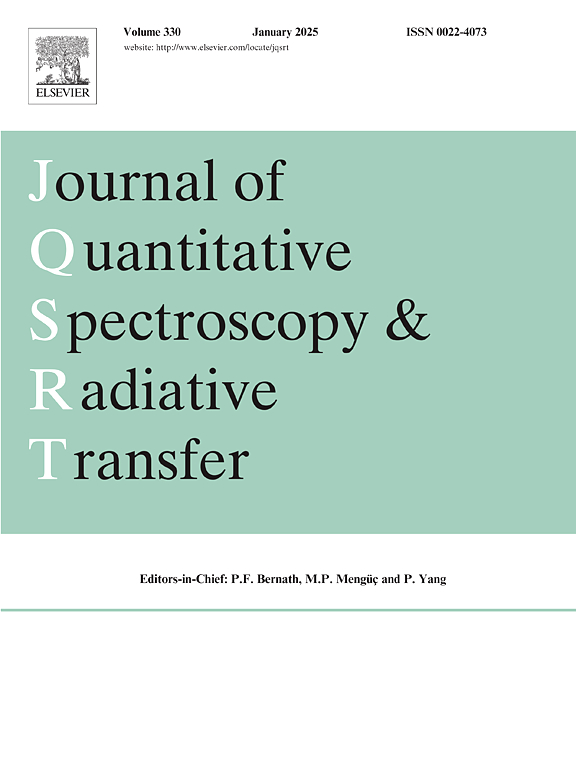An accurate determination of O2 A-band line intensities through experiment and theory
IF 2.3
3区 物理与天体物理
Q2 OPTICS
Journal of Quantitative Spectroscopy & Radiative Transfer
Pub Date : 2025-02-27
DOI:10.1016/j.jqsrt.2025.109412
引用次数: 0
Abstract
Accurate intensities of the O2 A-band centered about 760 nm are essential to reduce biases in satellite- and ground-based remote measurements of column-integrated air mass and greenhouse gas concentration. In support of these remote sensing techniques, we made cavity ring-down spectroscopy measurements of 16O2 A-band line intensities up to J = 40, and we extrapolated these values to J = 60 using scaled ab initio intensity calculations. The J dependences of the measured and theoretical intensities differ on average by less than 0.1 %, and the measured intensities have relative combined standard uncertainties at the 0.15 % level. Upon evaluation of the integrated intensity, we find a negative bias between literature results and this work, which is four times greater than our present uncertainty.
求助全文
约1分钟内获得全文
求助全文
来源期刊
CiteScore
5.30
自引率
21.70%
发文量
273
审稿时长
58 days
期刊介绍:
Papers with the following subject areas are suitable for publication in the Journal of Quantitative Spectroscopy and Radiative Transfer:
- Theoretical and experimental aspects of the spectra of atoms, molecules, ions, and plasmas.
- Spectral lineshape studies including models and computational algorithms.
- Atmospheric spectroscopy.
- Theoretical and experimental aspects of light scattering.
- Application of light scattering in particle characterization and remote sensing.
- Application of light scattering in biological sciences and medicine.
- Radiative transfer in absorbing, emitting, and scattering media.
- Radiative transfer in stochastic media.

 求助内容:
求助内容: 应助结果提醒方式:
应助结果提醒方式:


